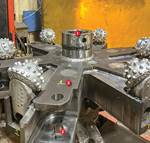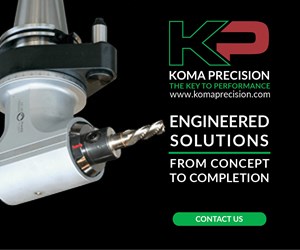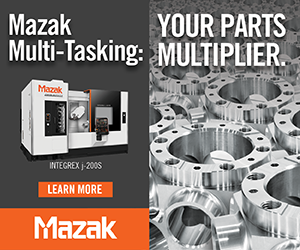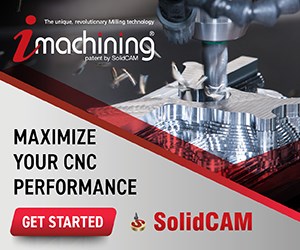Six-Spindle Turning Center Provides 27 NC Axes
Index’s MS16 Plus lathe accommodates parts as large as 22 mm in diameter and is capable of turning, drilling, milling, tapping, deep-hole drilling or slotting in each of its six CNC spindles.
Index’s MS16 Plus lathe accommodates parts as large as 22 mm in diameter and is capable of turning, drilling, milling, tapping, deep-hole drilling or slotting in each of its six CNC spindles. The compact turning center provides the speed of a cam-controlled machine with the flexibility of CNC technology yet requires no more floor space than a cam-controlled, multi-spindle machine, according to the company.
Workpieces are automatically indexed through the six spindles, receiving two or more operations at each position for high production of turned components. The speed of each of the six spindles can be controlled separately and varied during cutting for each spindle position and each cutting edge. Speed and spindle positioning changes are possible even during spindle drum indexing, avoiding secondary processing times.
Controlled by an Index C200-4D CNC, the turning center’s total of 27 NC axes includes five NC grooving or boring slides, five NC cross-slides, one NC cutoff and/or back-boring slide, six work spindles and one NC synchronous spindle plus an additional five free NC axes of possible CNC-controlled auxiliary equipment. Each of the six spindle positions can include a grooving or boring slide with one NC axis and a cross-slide with two NC axes (X and Z) that are arranged around each work spindle in a V shape, enabling use of several tools simultaneously on each spindle.
For rear-end machining, the turning center is equipped with a synchronous spindle driven by a hollow-shaft motor enabling speeds ranging to 10,000 rpm. This spindle can move 140 mm along the Z axis at 30 m/min to engage several rear-end machining tools on the NC cutoff slide with the X and Z axis in succession. To achieve the shortest cycle times possible, the synchronous spindle accelerates to 10,000 rpm in less than 0.7 sec.
Related Content
-
Inside an Amish-Owned Family Machine Shop
Modern Machine Shop took an exclusive behind-the-scenes tour of an Amish-owned machine shop, where advanced machining technologies work alongside old-world traditions.
-
How to Start a Swiss Machining Department From Scratch
When Shamrock Precision needed to cut production time of its bread-and-butter parts in half, it turned to a new type of machine tool and a new CAM system. Here’s how the company succeeded, despite the newness of it all.
-
Zero-Adjustment Bar Pullers Simplify Turning Automation
Spring-loaded grippers and adjustable programming are enabling bar pullers to fulfill their promise to save time and money in CNC turning automation.
.jpg;maxWidth=970;quality=90)








.jpg;maxWidth=300;quality=90)




.png;maxWidth=300;quality=90)


